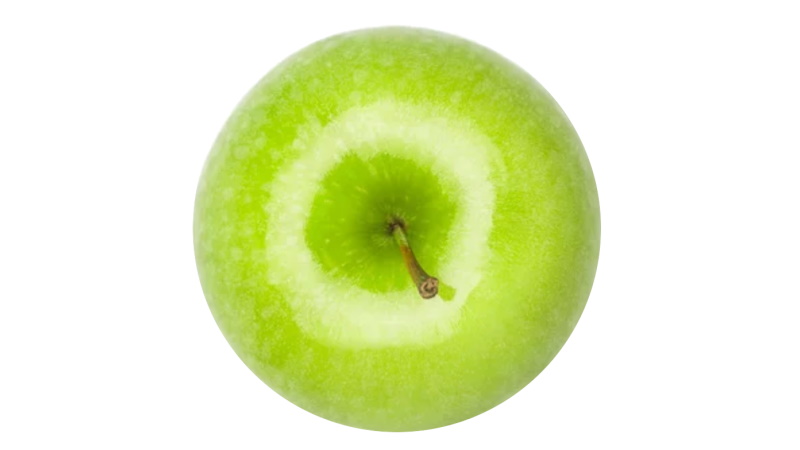How Auto Weeders and Thinners Work [Photo Essay]
Sometimes all the words in the world can’t explain how equipment works as well as photos. Take a look at these before and after field images, showing how an auto weeder and an auto thinner does its job.
How Auto Thinners Work
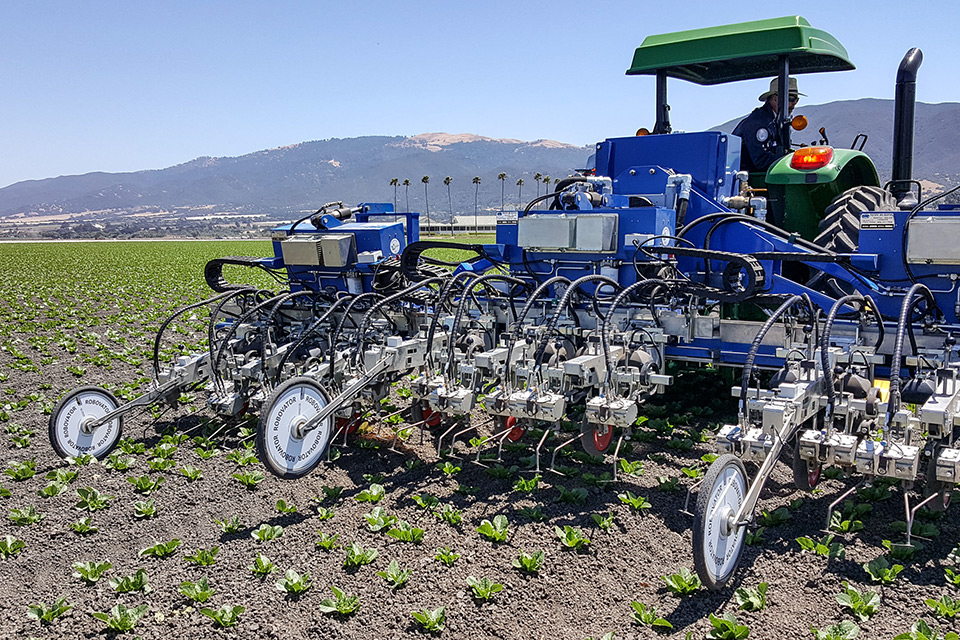
The Robovator Automated Weeding Machine uses cameras to identify weeds. Photo by Bart Walker.
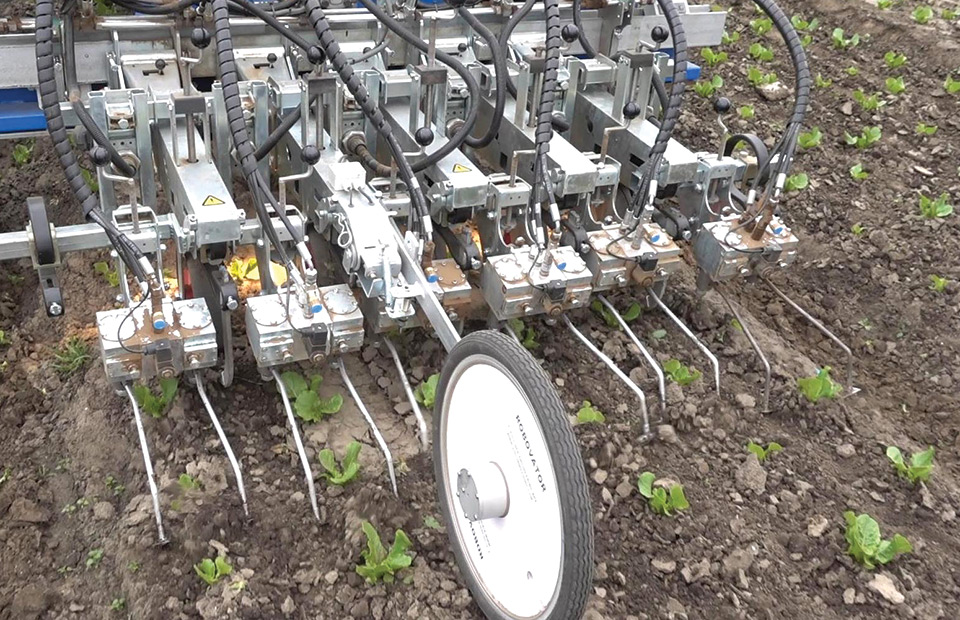
Hoe-like blades cultivate all around the crop, removing weeds, but leaving the crop intact. Photo by Bart Walker.
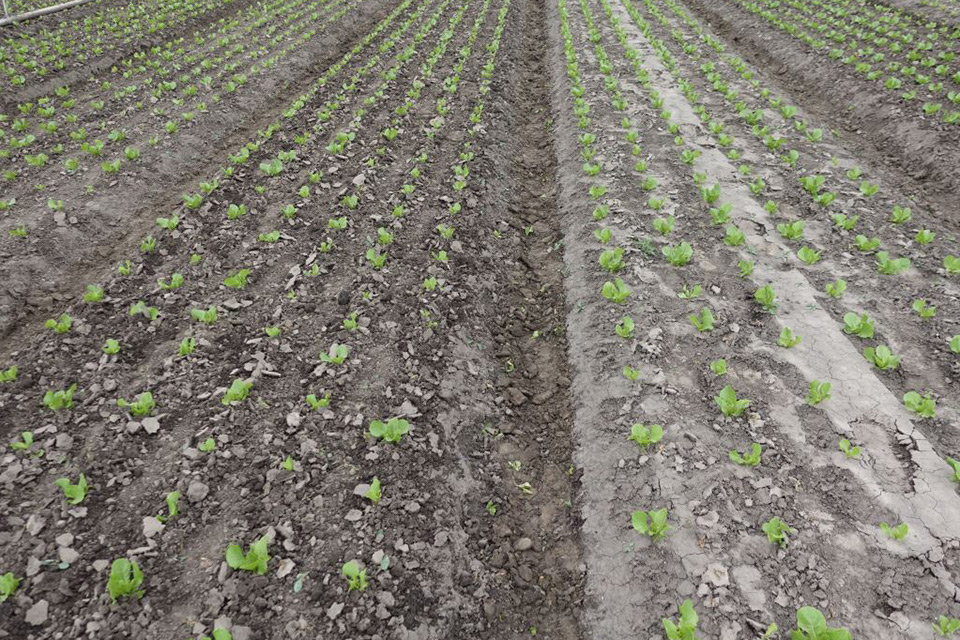
Compare the cultivated bed on the left to the one that has not yet been touched. Photo by Bart Walker.
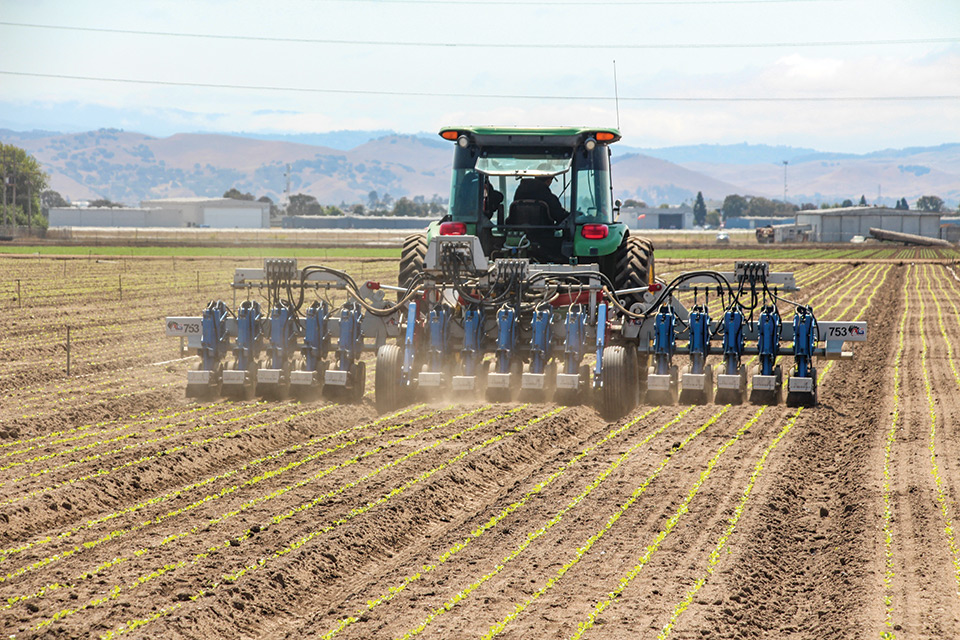
Auto thinners use cameras and software to identify which seedlings to keep, and sprays a hotshot of fertilizer (used here) or pesticide to kill the undesired seedlings. Photo by Carol Miller.
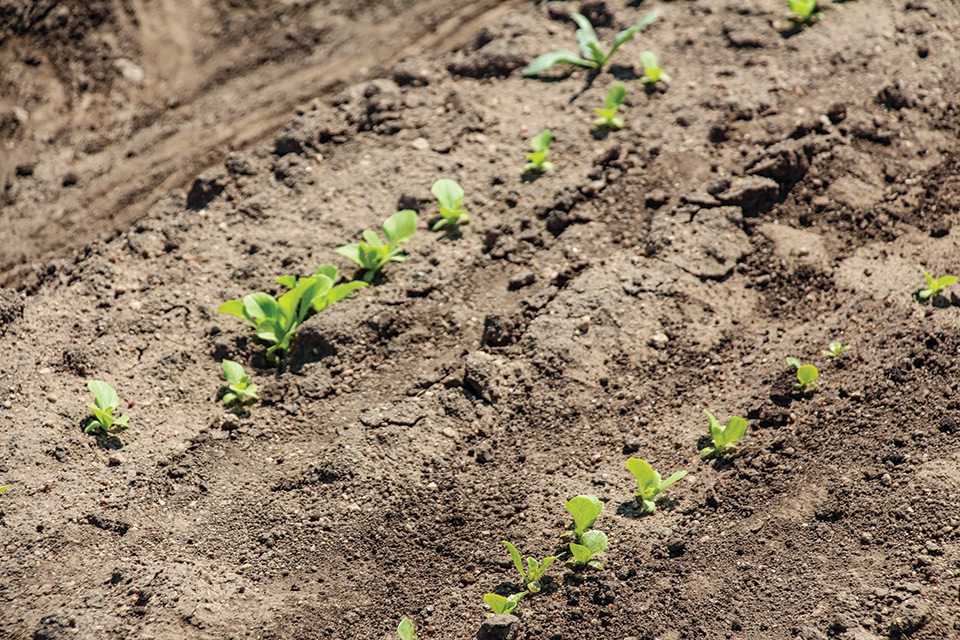
Lettuce seedlings are within a half inch of each other prior to using the auto thinner. Photo by Carol Miller.

Auto thinners can use either an herbicide or a hotshot of fertilizer to kill the unwanted seedlings. In this case, the grower used a hotshot — the damp patches show where its been applied. Photo by Carol Miller.
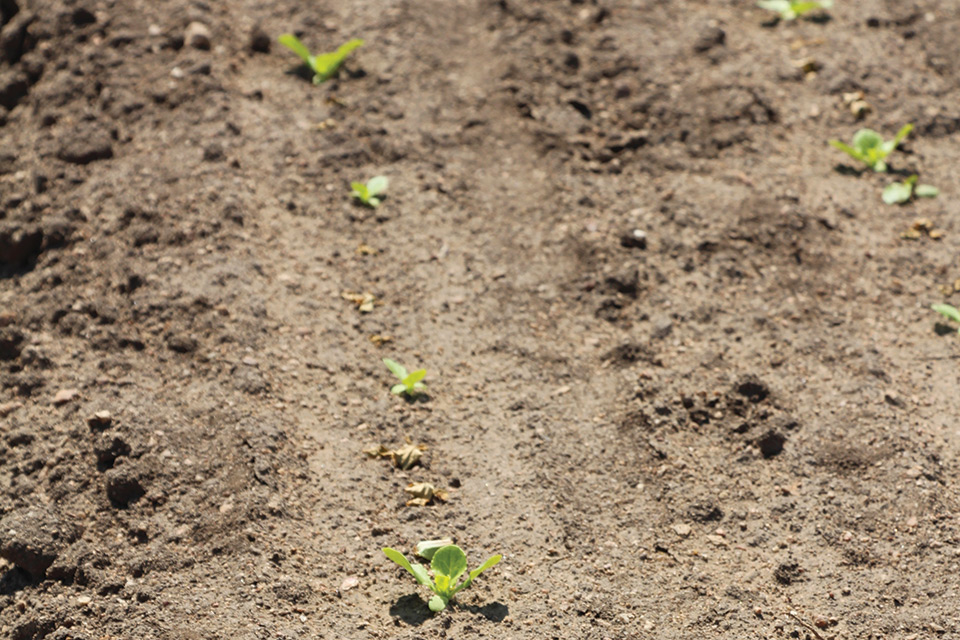
With in days, the treated seedlings die, several inches between each healthy lettuce seedling. Photo by Carol Miller.






